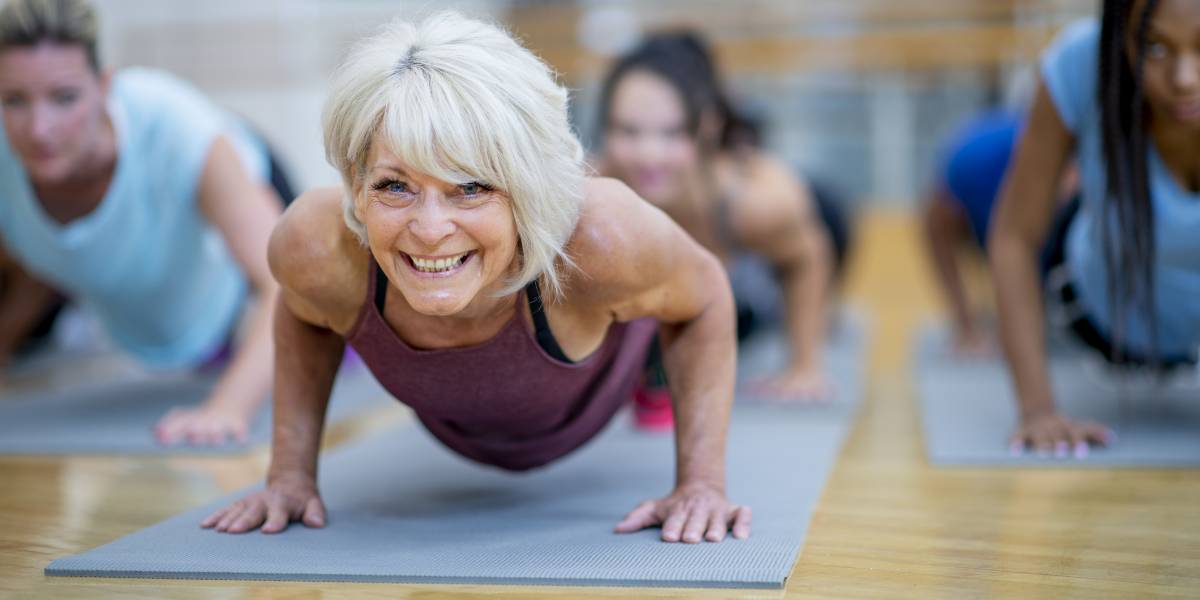Maintaining agility and vitality throughout life is a common aspiration for many individuals. The concept of ageless agility transcends mere physical appearance; it encompasses overall well-being, including mental acuity and emotional resilience. In this article, we delve into the significance of physical activity as a cornerstone for achieving ageless agility.
The Importance of Physical Activity
The Role of Exercise in Maintaining Youthfulness
Physical activity plays a pivotal role in preserving youthfulness by enhancing cardiovascular health, promoting muscle strength, and improving flexibility. Engaging in regular exercise can mitigate the effects of aging, such as decreased bone density and muscle mass loss.
Benefits Beyond Physical Health
Beyond its physical benefits, regular exercise contributes to mental clarity, stress reduction, and emotional well-being. It fosters a positive outlook on life and enhances self-esteem, factors that are essential for maintaining a youthful mindset.
Tailoring Physical Activity to Different Age Groups
Youth: Building Foundations
For younger individuals, physical activity serves as a foundation for healthy growth and development. Encouraging participation in sports and recreational activities fosters physical literacy and instills lifelong habits of movement.
Adulthood: Sustaining Vitality
In adulthood, maintaining vitality requires a balance of aerobic exercise, strength training, and flexibility workouts. Incorporating varied activities ensures holistic fitness and reduces the risk of chronic diseases associated with aging.
Seniors: Promoting Mobility and Independence
As individuals age, prioritizing activities that enhance balance, coordination, and flexibility becomes paramount. Tailored exercise programs can mitigate the risk of falls, improve mobility, and prolong independence in older adults.
Best Exercises for Ageless Agility
Cardiovascular Workouts
Activities such as brisk walking, cycling, and swimming elevate heart rate and improve circulation, benefiting both cardiovascular and respiratory health.
Strength Training
Resistance exercises, including weightlifting and bodyweight exercises, are crucial for preserving muscle mass, bone density, and metabolic function.
Flexibility and Balance Exercises
Yoga, tai chi, and Pilates promote flexibility, balance, and proprioception, reducing the risk of injuries and enhancing overall mobility.
Incorporating Physical Activity into Daily Life
Strategies for Busy Schedules
Incorporating physical activity into daily routines, such as taking the stairs instead of the elevator or scheduling short exercise breaks during work hours, can help overcome time constraints.
Making Exercise Enjoyable
Choosing activities that align with personal interests and preferences increases adherence to exercise regimens. Whether it’s dancing, hiking, or playing sports, finding joy in movement is key to long-term engagement.
Nutrition and Hydration: Complements to Physical Activity

Importance of a Balanced Diet
A nutrient-rich diet comprising lean proteins, whole grains, fruits, and vegetables provides the necessary fuel for physical activity and supports muscle recovery and repair.
Hydration Tips for Optimal Performance
Staying hydrated is essential for maintaining performance and preventing dehydration-related complications. Consuming adequate fluids before, during, and after exercise is crucial for optimal hydration.
Overcoming Challenges and Barriers
Addressing Motivation Issues
Setting realistic goals, tracking progress, and seeking social support can bolster motivation and help overcome barriers to exercise adherence.
Dealing with Physical Limitations
Consulting with healthcare professionals and modifying exercise routines to accommodate individual capabilities can facilitate participation in physical activity despite physical limitations.
Tracking Progress and Adjusting Goals
Setting Realistic Benchmarks
Establishing achievable goals and tracking progress through journaling or fitness apps provides tangible evidence of improvement and encourages continued efforts.
Monitoring Physical and Mental Improvements
Regular assessments of physical fitness, such as strength tests and flexibility measurements, complement subjective assessments of mood and well-being, fostering a holistic approach to health.
The Mind-Body Connection
Mental Benefits of Physical Activity
Exercise releases endorphins, neurotransmitters that promote feelings of happiness and reduce stress and anxiety, highlighting the interconnectedness of physical and mental well-being.
Techniques for Stress Reduction
Incorporating relaxation techniques such as deep breathing, meditation, and mindfulness practices into exercise routines enhances stress resilience and promotes mental clarity.
Safety Precautions and Injury Prevention
Proper Warm-up and Cool-down
Engaging in dynamic warm-up exercises and static stretching routines before and after workouts respectively prepares the body for activity and minimizes the risk of injuries.
Recognizing Warning Signs
Listening to the body’s cues and heeding warning signs such as pain, dizziness, or excessive fatigue is crucial for preventing overexertion and injury during exercise.
Incorporating Variety into Workouts

Preventing Plateaus
Introducing variety into exercise routines prevents boredom, promotes muscle confusion, and maximizes the benefits of physical activity by targeting different muscle groups.
Exploring Different Activities
Experimenting with new activities and exercise modalities challenges the body in novel ways, fostering adaptability and preventing stagnation in fitness progress.
Social Engagement through Physical Activity
Group Classes and Sports
Participating in group fitness classes or team sports fosters camaraderie, accountability, and social connections, enhancing the overall exercise experience.
Connecting with Like-minded Individuals
Joining fitness communities or online forums enables individuals to share experiences, exchange tips, and find support from like-minded peers, fostering a sense of belonging and motivation.
Maintaining Consistency
Establishing Habits
Building consistent exercise habits through routine scheduling and habit formation techniques ingrains physical activity as a natural part of daily life.
Overcoming Setbacks
Accepting setbacks as temporary challenges and reframing setbacks as opportunities for growth cultivates resilience and perseverance in pursuing long-term health goals.
Celebrating Achievements
Recognizing Milestones
Acknowledging and celebrating achievements, whether they’re small victories or significant milestones, reinforces positive behaviors and sustains motivation. Whether you’ve reached a new personal best in your workout, successfully completed a fitness challenge, or achieved a specific health goal, taking the time to acknowledge your progress is essential for staying motivated and maintaining momentum.
Rewarding Yourself
Incorporating rewards into your fitness journey can further incentivize your efforts and make reaching your goals even more satisfying. Treat yourself to something you enjoy, whether it’s a relaxing massage, a movie night with friends, or indulging in a healthy treat. By associating positive rewards with your accomplishments, you’ll strengthen your commitment to your fitness regimen and enhance your overall sense of well-being.
Conclusion: Embracing Ageless Agility
In conclusion, ageless agility is attainable through a multifaceted approach that prioritizes physical activity, nutrition, and holistic well-being. By embracing regular exercise, adopting a balanced diet, and nurturing the mind-body connection, individuals can maintain vitality, resilience, and youthful energy throughout their lives.

